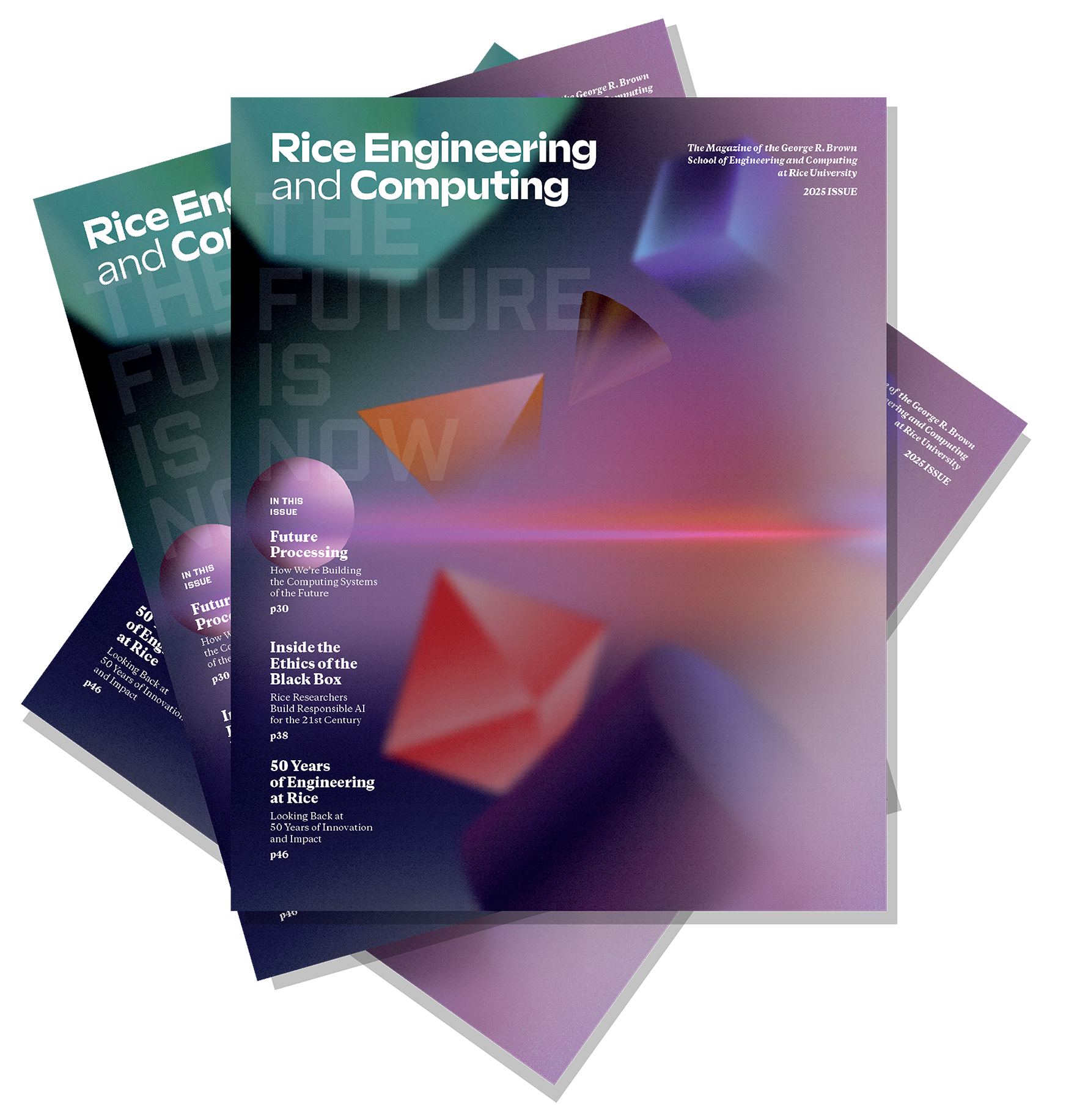
The 2025 issue of Rice Engineering and Computing Magazine is here!
In our 50th anniversary issue, we celebrate the deep and growing connection between engineering and computing. From our early breakthroughs in high-performance computing to today’s advances in AI and data science, Rice has long been at the forefront of computing innovation. This edition highlights some of the people, ideas, and investments shaping what’s next.
5 Questions for Lydia Kavraki

Your work spans both robotics and biomedicine—two fields that seem distinct. Is there a common theme?
My research focuses on physical AI, exploring how computers learn, represent, and interact with the real world in all its glorious complexity. Unlike more traditional “artificial” domains, such as databases and computer networks, where we enjoy pristine data and precise control, physical AI grapples with environments governed by the imperfectly modeled laws of nature. My work addresses fundamental questions that arise when computational systems meet physical reality: devising robust representations, managing high-dimensional data, reasoning under uncertainty, and balancing accuracy with computational efficiency. Physical AI is the ultimate frontier in modern computing and key to tackling critical global challenges.
What excites you about robotics and computational biomedicine?
My fascination with shape and motion drew me to robotics early on. Our lab now ensures that robots move reliably despite their noisy sensors, advances exploited in partnership with NASA to extend space exploration. In graduate school, I saw how subtle structural changes in biomolecules can affect health and disease, inspiring current work on the role of biomolecular interactions in personalized immunotherapies. Our collaborations with MD Anderson let us translate computational insights into real clinical impact.
AI is advancing at a rapid pace, sparking both excitement and ethical concerns. What are the most pressing ethical challenges you see today?
The concerns are many. As AI developers, we prioritize transparency, explainability, and robustness—qualities too often sacrificed in the rush to deploy. Imagine a robot working near people: safety cannot be 99.9%, it must be absolute. Equally crucial is engaging users from the start so that AI truly aligns with human needs. We expose data biases, weigh their consequences, and choose robotics and biomedical projects with an unwavering commitment to positive societal impact.
You are leading an Institute with more than 200 members. How has the Ken Kennedy Institute evolved under your leadership?
The Ken Kennedy Institute has gained significant momentum thanks to strong university support, exceptional faculty, and extraordinary staff. A key recent initiative unites our core AI faculty around research clusters targeting fundamental roadblocks in AI and addressing computational questions in health and disaster resilience—these topics comprise our current research focus. We also strengthen graduate education through fellowships and invigorate our community with workshops, boot camps, distinguished lectures, and two annual conferences exploring AI in energy and health.
How do the students today compare to those you taught in the late ’90s?
I remain impressed by how bright, curious, and ambitious our students are—just as in the late ’90s. Teaching them is incredibly rewarding. They are fearless: in my robotics class, they routinely exceed my expectations. I have learned never to underestimate their abilities. More than 100 undergraduates have joined my lab, with many publishing papers and presenting at conferences. Today’s tools—advanced programming environments, open-source libraries, and powerful processors—enable feats we only imagined in the ’90s. When students combine the solid foundations we provide with modern resources, their potential is limitless.
